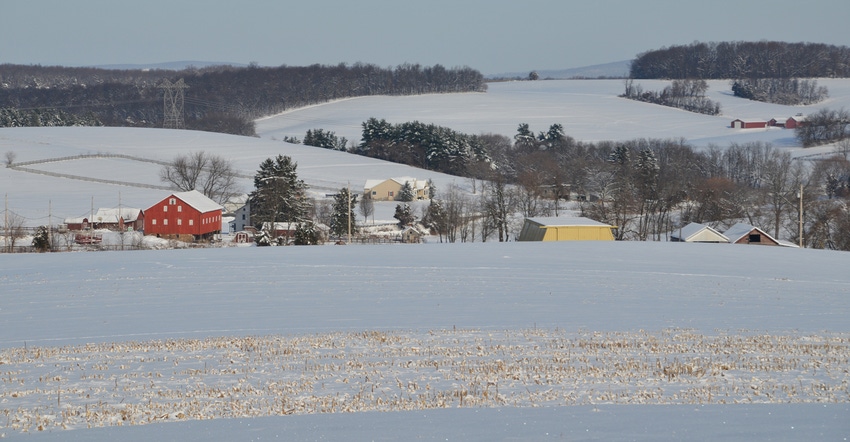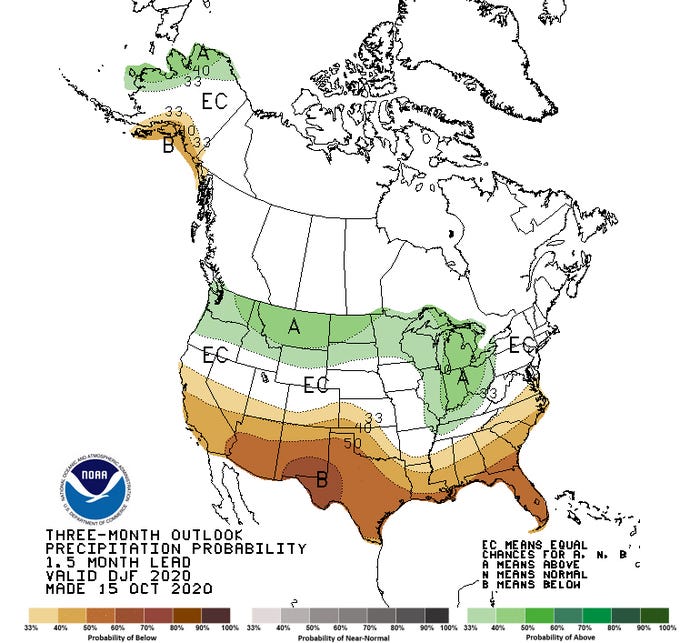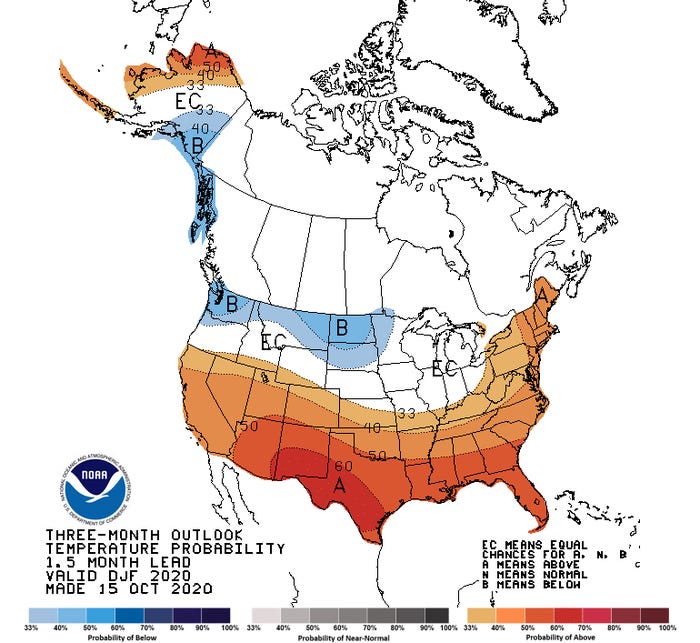
Whether you rely on the shape of a persimmons seed, magnetic storms on the surface of the Sun or just good old-fashioned science, predicting the weather, especially the long-term forecast, isn’t an exact science.
So, what’s the prediction for this winter? Depends on who you ask, but the “official” long-term forecast favors a warmer winter for the Mid-Atlantic and Northeast.
“The greatest chances for warmer-than-normal conditions extend across the southern tier of the U.S. from the Southwest, across the Gulf states and into the Southeast. More modest probabilities for warmer temperatures are forecast in the southern parts of the West Coast, and from the Mid-Atlantic into the Northeast,” according to the National Oceanic and Atmospheric Administration’s official winter forecast.
In terms of precipitation, the Mid-Atlantic and Northeast are in the “equal chances” zone, meaning that it could be wetter than normal or dryer than normal.

Jessica Spaccio, the regional climatologist for the Northeast Regional Climate Center, says that recent trends favor a slightly warmer winter across the region.

This year’s La Niña — when sea surface temperatures are cooler than average in the equatorial Pacific for at least several months, altering tropical rainfall patterns and the global atmospheric circulation — is expected to be moderate to strong, she says, which typically means less snowy weather. But no prediction is guaranteed, especially this far out.
The Northeast Region Quarterly Climate Impacts and Outlook, released earlier this month, shows very different La Niña impacts on the weather in the Northeast based on historical data. Prior to 1985, La Niña years tended to coincide with wetter winters. After 1985, though, it’s been a mixed bag.
The 2017-18 winter was about average in terms of precipitation but the winter of 2011-12 was much drier than normal. Other factors like long-term climate trends or climate variability associated with the Arctic Oscillation and the North Atlantic Oscillation also have a big impact on the weather.
Spaccio says that the most accurate winter weather predictions are based on two-week timescales, of which we’re not even close to. Still, she says the odds have increased of warmer-than-normal temperatures this coming winter.
What do the almanacs say?
Of course you can’t guess what the winter weather’s going to be like until you’ve looked at what the almanacs say.
The Old Farmer’s Almanac is calling for a “light winter” for most in the U.S., with warmer-than-normal temperatures across much of the country.
For much of New York and New England, “It’s Snow Time,” while much of the Mid-Atlantic will be “Sheets of Sleet,” according to the Old Farmer’s Almanac website.
“Uncommonly chilly temperatures will be limited mostly to the western states and northeastern New England,” according to the Old Farmer’s Almanac. “Specifically, winter will be colder than normal in Maine; the Intermountain, Desert Southwest and Pacific Southwest regions; and eastern Hawaii, and above normal elsewhere. On the precipitation side of things, expect ‘wet’ to be a wintertime constant with rain or average to below-average snowfall to be the standard throughout most of the country.”
The Farmers’ Almanac is calling for the “Winter of the Great Divide.”
“Remember last year’s almost snow-free winter in the Northeast? Well, this year our prediction is very different, with the possibility of a blizzard hitting the Mid-Atlantic and Northeast states during the second week of February,” according to the Farmers’ Almanac website. “This storm may bring up to 1-2 feet of snow to cities from Washington, D.C., to Boston, Massachusetts!”
The Old Farmer’s Almanac and The Farmers’ Almanac rely on what they claim are “time-tested” formulas for weather prediction.
According to the online Mother Nature Network, Robert B. Thomas, founder of the Old Farmer’s Almanac, thought that Earth's weather was influenced by magnetic storms on the surface of the Sun and he developed a secret weather prediction formula based on that belief. The book’s editors claim an 80% accuracy rate.
The Farmers’ Almanac makes its forecasts based on sunspot activity, tidal action of the moon, the position of the planets and other factors.
While the exact formula is a mystery, the only person who knows it is the almanac’s official weather prognosticator who goes by the pseudonym Caleb Weatherbee, according to Mother Nature Network.
The Farmers’ Almanac claims an 80% to 85% accuracy rate.
And you can’t forget the Persimmon’s Lady forecast. According to folklore, if you crack open a persimmon seed from a ripe fruit and look at the shape inside (called a cotyledon), it can forecast the winter weather.
If it’s a fork shape, winter will be mild; spoon shape, lots of snow; and knife shape, bitingly cold that “cuts like a knife.”
The Farmers’ Almanac says that it’s still waiting for the fruit for the Persimmon Lady to read the seeds. So, until then, be ready for anything!
About the Author(s)
You May Also Like






